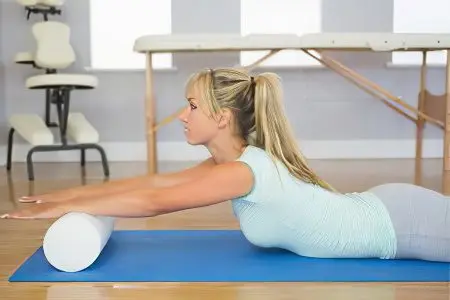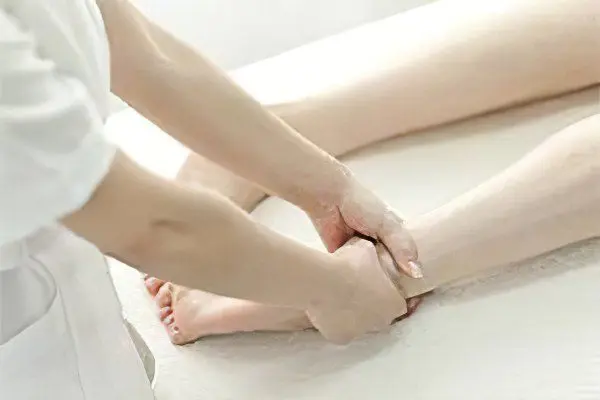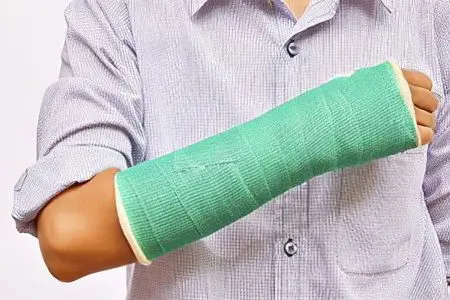Contents
The human body is very fragile, so none of us are really immune to bone fractures that occur as a result of serious injuries. Unfortunately, most of these injuries require not only drug therapy, but also surgery, as well as a long rehabilitation period after fusion.
In especially severe cases, the damaged limb loses its ability to fully function, which leads to irreversible changes in the system of the entire musculoskeletal system. Loss of mobility is a common problem, and in order to prevent this, it is necessary to take care of rehabilitation measures in a timely manner, that is, to carry out a series of recovery procedures after a fracture.
Rehabilitation measures: the essence of the methods and their impact on the body

It is advisable to start physiotherapy immediately after discharge from the medical institution, since the lost time during the recovery period can be fatal for the injured limb. The part of the body that has suffered a fracture and fusion is immobilized for a long time, which negatively affects blood circulation, provokes general muscle rigidity, and reduces the ability of the lungs to saturate the body with oxygen. This leads to malfunctions in the work of other life-supporting systems of our body and reduces the overall health of a particular person. The course of specialized medical rehabilitation is designed specifically to restore lost physiological abilities and functions.
What is meant by the term “rehabilitation”? This is a whole complex of individually selected medical, sociological, pedagogical, psychological and professional measures of influence on a person who has undergone trauma. As a result of such a course, a person who has temporarily or permanently received the status of a person with limited physical abilities must regain his ability to work, health and adaptability to the surrounding reality. Thus, the restoration of the lost functionality is a top-priority task, which the patient consistently strives to fulfill, in accordance with an individual load schedule and under the constant supervision of specialized specialists.
In order to prevent advanced cases of muscle atrophy, it is necessary to engage in physiotherapy exercises (abbreviated exercise therapy) for several months after fusion. The exercises of this cycle are also selected purely individually, and when compiling a physiotherapy card, both the nature and type of injury and the general emotional and psychological state of the patient are taken into account. In addition, the course of rehabilitation measures includes procedures aimed at resuming the normal functioning of the circulatory system and healing of soft tissues, the integrity of which could be violated during the receipt and healing of the fracture.
In the infrastructure of rehabilitation centers, sanatoriums are especially popular, each of which has its own medical profile. Today, in such institutions, the latest methods of rehabilitation therapy are successfully used. With this type of treatment, the patient does not have to wait until the fracture is completely healed. Already on the second day after a full examination of the victim, you can start physiotherapeutic procedures, even if during the initial examination a plaster cast or splint was applied to the injury site.
In some cases, it is advisable to prescribe massage or acupuncture sessions to the patient. During the first week, massage is performed in a simplified technique on the surface of the applied splint. If the fracture allows you to temporarily remove the splint, gently massage the skin. After two weeks, it is necessary to increase the intensity of the surface exposure. If a plaster cast is applied, in the first few days the massage is carried out through it. It is imperative to continue the procedure even after the plaster is removed, according to the instructions of the attending physician. How to massage a damaged organ through bandages, splints and plaster? Very simply, the method of magnetotherapy comes to the rescue, which has proven itself excellently in the rapid restoration of the functionality of the limbs after fractures.
Sanatorium complexes are equipped with the necessary equipment and qualified personnel. But if you do not have the opportunity to visit such an institution, do not be upset. In most public clinics and hospitals, special recreational medicine departments and exercise therapy rooms have been created for patients in need of rehabilitation therapy.
Understanding the importance and necessity of rehabilitation therapy is the key to a full recovery and restoration of the physiological functions of the injured part of the body.
Rehabilitation after a broken leg: ankle, knee, shin, heel

With this type of injury, the patient is prescribed complex procedures, including exercise therapy, “pearl” baths, massage, diet, special exercises on simulators. They also recommend vitamin and mineral supplements that promote accelerated bone tissue regeneration, and amino acids necessary for the healing of damaged muscles. Be sure to take measures aimed at restoring the motor activity of the limb.
If the injury was complicated by bone crushing or displacement of its fragments, the rehabilitation period will take much longer than with a closed fracture without burdening. This is due to the fact that with such damage, the limb is longer without movement, which means that the consequences of low activity are aggravated.
If the leg was broken in several places, then rehabilitation measures should be reduced to a single denominator so as not to overload the already “tired” limb.
Basically, the recovery course comes down to several main stages:
Elimination of excess fluid, which formed edema due to prolonged immobilization of the limb. To restore normal blood circulation, they increase the physical load on the leg, this helps to restore muscle tone, strengthen the vascular walls and eliminate congestion in the tissues;
Return of the motor function of the leg to the previous level before the injury. For this, massage, physiotherapy and mineral baths are used;
During the third stage, the patient is assigned a special diet, which helps to effectively restore the muscles damaged during a fracture.
A heel fracture is a dangerous deformity of the foot, so the tasks of recreation in this case are:
Accelerating the regeneration of muscle tissue, increasing muscle tone and elasticity;
Elimination of muscle rigidity and vascular malformations in the injured limb;
Increasing the load on the foot in order to give the leg greater mobility;
Relief from puffiness;
Increased physical activity of the entire limb.
After removing the plaster, rehabilitation should include the following activities:
Massage;
Physiotherapy;
mud applications;
Mineral baths;
Physical exercise;
Diet food.
Treatment of a fracture of the lower leg in the recovery period requires compliance with special requirements. Several basic recovery methods are used: strictly dosed physical activity in the form of exercise therapy, ultrasound and electromagnetic therapy, procedures whose action is aimed at stopping the symptoms of functional disorders.
Rehabilitation after fractures of the arm

The main thing that rehabilitation measures after hand injuries should contribute to is the correct fusion of the bone. Only if this condition is observed, it is possible to achieve a full restoration of the functionality of the limb. Elimination of the consequences of prolonged immobilization and atrophy is a priority, otherwise the vascular changes that have occurred in the hand will be irreversible. It is also important to pay attention to the tone and elasticity of the tissues, the mobility of the hinge joints and getting rid of swelling in the fusion sites. An increase in the motor activity of the injured hand ahead of time can lead to a second fracture, so all loads should be strictly controlled by the attending physician.
Depending on the type and location of the fracture, the restoration of limb functions is divided into three main courses:
Massage to eliminate the stagnation of fluids in the injured arm;
Exercises aimed at restoring motor activity;
Proper nutrition, which will make it possible to compensate for the loss of silicon and calcium. These minerals serve as the starting material for the formation of growing bone tissue.
In case of a fracture of the radius, therapeutic exercises, massage and other physiotherapy procedures are prescribed for regenerative purposes.
There are three stages of recreational activities carried out after a fracture of the radius:
Creation of special conditions that ensure complete immobility of the injured limb;
Removal of a plaster cast, splint or splint – post-immobilization;
Immediate restoration of mobility of the hand.
General methodology of rehabilitation therapy
Summing up, we can say with confidence that the key types of rehabilitation after injuries and fractures are magnetotherapy, physiotherapy, massage and physiotherapy exercises.
Exercise therapy – This is a special complex of physical activities that contribute to an increase in the functional activity of the damaged part of the body. Exercises prevent the process of degeneration in the organs and tissues of the injured limb. Physiotherapy also prevents the occurrence of atrophy and muscle rigidity. Every major medical institution has a specialist in recreational treatment.
Magnetotherapy – helps to increase muscle strength, coordination of movements and form the correct muscle reactivity. The effectiveness of the procedures is achieved due to the passive oscillatory effect of the magnetic field. The method is quite new, but has already proven itself in the treatment of complex fractures.
Physiotherapy – an integrated approach that combines many multidirectional procedures. In the early stages of rehabilitation after fractures, ultrasound and UHF heating are prescribed. This is necessary in order to reduce swelling, stop pain, improve blood microcirculation and lymph flow in places of bone fusion. After removing the plaster, phonophoresis, electrophoresis, drug treatment and laser therapy can be prescribed. In especially severe cases, myostimulation is used.
Massage, in essence, these are all the same physical exercises, but their main difference from exercise therapy is passivity. Types of medical massage differ in the strength of the impulses sent. Therefore, depending on the technique used, these effects can be aimed at toning the central nervous system, relaxation, or, conversely, at spurring ongoing processes. Therapeutic massage has a positive effect on the physiological activity of all vital systems of the body.
The attending physician should prescribe a course of recreational activities as early as possible, preferably a few days after a fracture or significant surgery. The functionality of a body part in the post-traumatic period and further throughout life depends on how early rehabilitation therapy is started.
Proper nutrition can be an excellent addition to physical methods of influence, since at the time of restoration of a broken limb, our body is in dire need of forming macro- and microelements.
Each type of rehabilitation treatment is designed to achieve a certain effect, so a full recovery can be achieved only with an integrated approach and the joint impact of specialized specialists on the patient’s body. Almost any of the listed methods can be used as part of rehabilitation after a fracture, both within the clinic and at home.










спасибо админ в тм